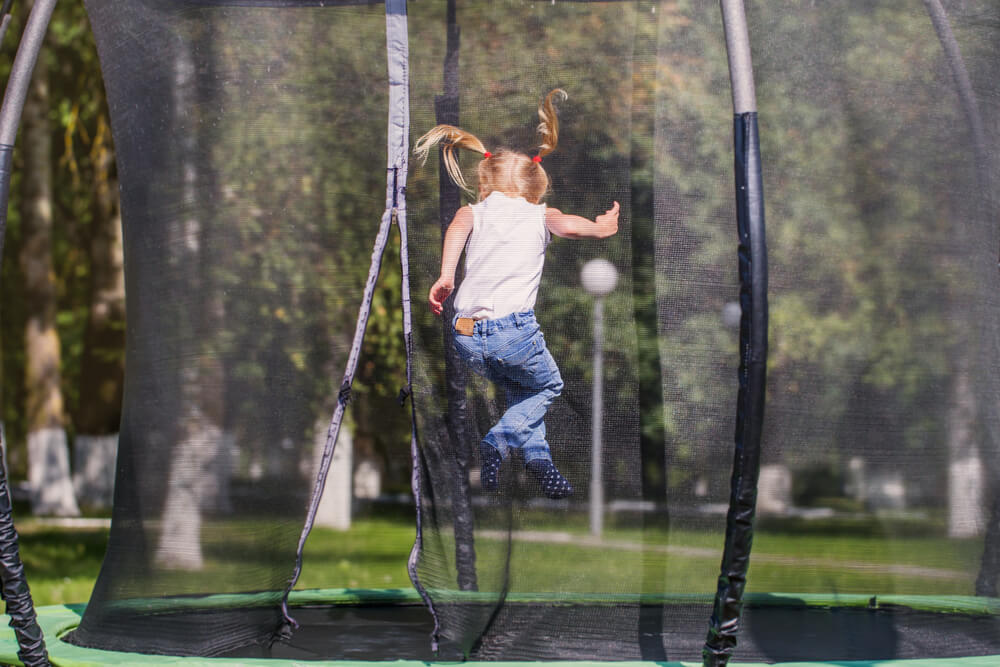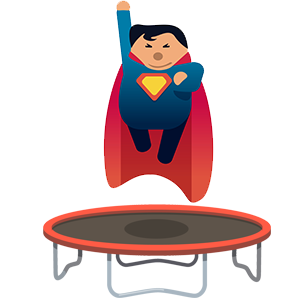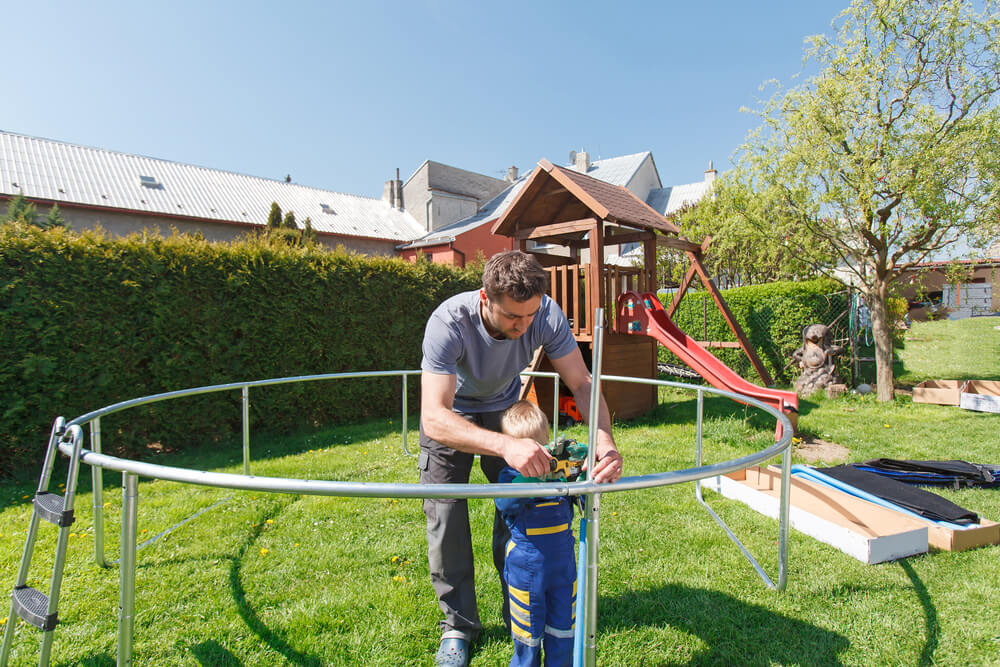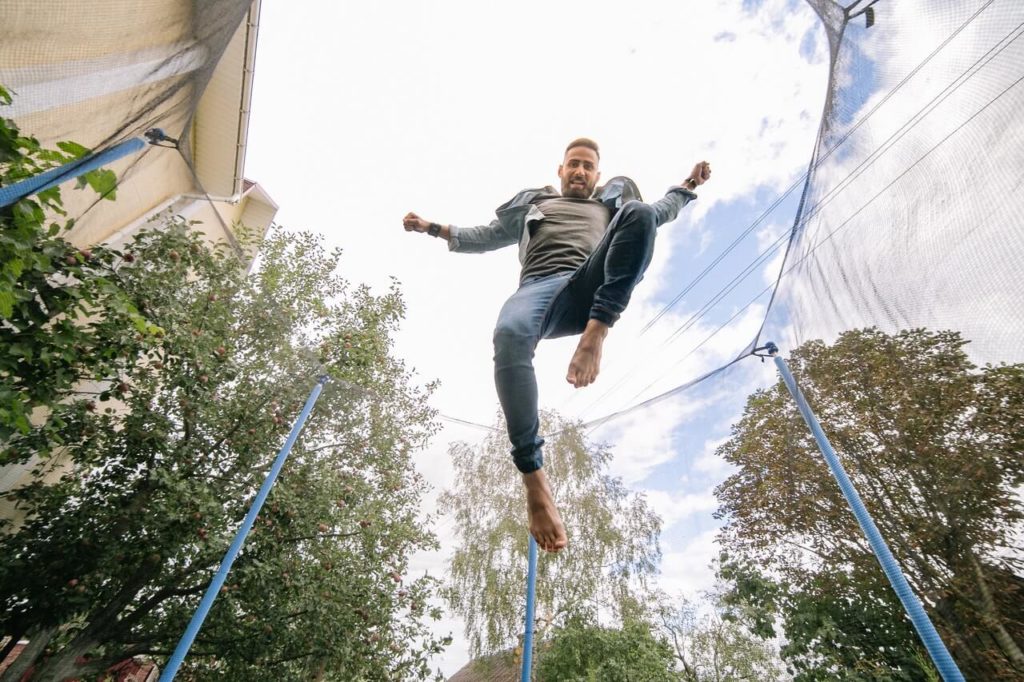As a new trampoline owner, you may be wondering, how much does trampoline insurance cost? Read on to discover how much to set aside, top insurance companies covering trampolines, and more.
When buying a trampoline, you want to ensure it has all the safety features covered by insurance.
This is not just about trampoline safety; your trampoline insurance is quite as important.
If you’re planning to insure your trampoline, you must first understand every detail about it.
That begs the question; how much does trampoline insurance cost?
Read on so you can plan well financially.
Do I Need Extra Insurance for a Trampoline?
Yes, you need extra insurance for your trampoline.
This is because homeowners insurance only includes liability coverage up to a specific limit.
If your insurance agent agrees to cover your trampoline, it certainly means that your personal liability limits will go up.
They’ll suggest that you add a personal umbrella insurance policy to your homeowner’s policy.
This will help you cover the costs if you face a lawsuit connected to injuries or damages incurred while using the trampoline.
What Are the Policies for Trampoline Insurance?
Trampolines don’t have a general insurance policy. You’ll only get coverage for your trampoline under an existing insurance policy.
The cost of trampoline insurance varies depending on the type of coverage.
There are different types of policies for trampoline insurance. Among them are homeowners policy and personal umbrella policy (PUP). Each of these policies will protect you financially but under specific categories.
How Much Will I Pay for Trampoline Insurance Under Homeowners Policy?
A trampoline is often regarded as an attractive nuisance.
And because of the significant risks of injury associated with using one at your home, your home insurance rates will be higher.
According to research, the average cost for homeowners insurance is about $2,305 per year for a policy limit of $300,000.
This is only for dwelling protection and liability.
When you bring in a trampoline, you’ll have to pay more to increase the coverage for liability and get extra protection for the risk of owning a trampoline.
How much extra you’ll pay for your trampoline insurance will be determined by the insurer since such coverage will be part of your homeowner’s insurance.
How Much Will I Pay for Trampoline Insurance Under PUP Policy?
A personal umbrella policy for your trampoline will increase your liability coverage limits.
If anyone gets injured or killed while jumping on the trampoline, you, the homeowner, are liable for the damages.
That’s why you need enough liability coverage from the umbrella policy. This policy covers any legal defense costs and damages up to the limit. In most cases, this amounts to between $1 million to $5 million.
A $1 million umbrella policy will cost you from $150 and $300 annually.
What Insurance Companies Allow Trampolines (In the U.S)?
First of all, most insurance companies in the US don’t cover trampolines due to their high liability risks.
But other companies will agree to cover your trampoline under the homeowner’s insurance policy. These providers include;
- Nationwide
- Allstate
- Farmers
- Amica
- Progressive
- GEICO
- State Farm
- Liberty Mutual and more
However, you should know that these companies have their own set rules and conditions you’d have to adhere to before you receive coverage.
Ensure you talk to your insurer to understand their conditions and make sure you have the proper protection.
What are the Conditions Insurance Providers Set for Trampoline Insurance?
While insurers may accept to cover your trampoline, they’ll set a few safety precautions for you. The company will cover your unit as long as you:
- Make sure it has a safety net enclosure
- Have the backyard or garden area with the trampoline fenced
- Install quality trampoline padding.
- Install fencing around your property, primarily if you reside in town.
How Do These Companies Cover Your Trampoline?
The insurer, through the homeowner’s insurance policy, will pay out within your limits for;
- Legal events in case you face a lawsuit associated with your trampoline
- Any medical expenses for guests injured on your trampoline
- Repair or replace your trampoline unit when destroyed or damaged by an event listed under the insurance cover.
What Happens If Someone Gets Hurt On My Trampoline?
When someone gets hurt using your trampoline and sues you, first they have to prove that;
- You had a duty to care for them and protect them from harm
- You breached that duty by not taking preventive safety measures or not maintaining the trampoline properly.
- The breach caused your injury. For example, if the trampoline’s broken spring resulted in their injury.
- Their injury cost them money in terms of medical expenses or lost wages.
You’ll only be liable for someone else’s trampoline injuries after determining how the accident happened.
For example:
- If you didn’t maintain your trampoline properly or supervise the kids as they jumped. As the owner, you are supposed to ensure the safety of your trampoline.
- If you didn’t do a thorough job assembling the trampoline and it becomes unstable, causing injuries from tipping.
These two instances will make you responsible for their accident.
But there are cases where you aren’t directly liable for someone else’s injury.
These are;
- When the manufacturer sells you a defective trampoline, they gave you a low-quality trampoline or one with defective parts that injured people. In situations like this one, the retailer or manufacturer of the trampoline may be held liable.
- When the trampoline user was irresponsible by engaging in risky behavior, people tend to perform dangerous stunts on trampolines and get injured in the process. a trampoline is not meant for flips or somersaults. If they get injured for being irresponsible, they will be liable for their injuries.
If it turns out that you’re responsible for someone’s trampoline injury, you’ll need to talk to your insurance agency and arrange for the necessary settlement.
There are plenty of ways one can get hurt using your trampoline.
According to the National Institute for Health study, most trampoline injuries result from collisions with other jumpers or falling on the mat, springs, or frame. Other injuries occur from falling off the trampoline onto a hard surface or the ground or attempting different stunts like flips and somersaults.
The most common trampoline injuries include:
- Dislocations
- Contusions
- Ligament injury
- Fractures
- Lacerations
The liability for trampoline injury depends on the cause of the accident.
Injury claims due to trampoline accidents are often attributed to negligence on the owner’s part, which is not always the case.
Make sure to investigate the cause of injury before assuming any responsibility.
How do I protect myself from a trampoline lawsuit – Legal Liability for Trampoline Injuries
There are myriad ways to protect yourself from trampoline lawsuits.
You already know that a trampoline is an attractive nuisance. And you can’t stop children (including your neighbor’s) from crushing onto your trampoline for a quick bounce.
This could cause a liability judgment against you if they get injured.
So you must take all measures to prevent any accidents and injuries.
- The first thing to do is erect a fence around your property.
- Keep the trampoline in an enclosed, locked area with restricted access. Remove any entry points that may allow children access to the trampoline unsupervised. This includes the ladder.
- Doing this will reduce your potential liability to the minimum.
- Ensure that you choose a trampoline with a safety enclosure net, comfortable foam padding, and cover.
- Monitor the trampoline area. The best way to monitor your backyard is by installing cameras or a smart alarm system. It will help you stay on top of situations and prevent accidents from happening.
- Every trampoline comes with a weight capacity specification. Even if it’s designed for multiple users, they must adhere to the weight limit. For you to ensure the safety of the jumpers, don’t let them exceed the load limit.
- If it is meant for two children, only let them use it under supervision to avoid collisions. But it’s much safer if they jumped one at a time while the rest cheer from the perimeter. You can also try installing an underground trampoline instead of the on-the-ground version.
- Avoid acrobatics in the trampoline at all times. Children will always want to try out flips and somersaults, but remind them that these are not stunts for a backyard trampoline. Somersaults and flips are leading causes of fatal, lifelong injuries of the cervix.
- Always inspect your unit to make sure the parts are still intact and in good condition.
- Talk to your homeowner insurance company to ensure you have enough liability to cover injuries and damages if an accident occurs on your trampoline.
- Get medical insurance for your children in case they are injured while trampolining.
- Finally, keep your insurance up to date.
These precautions will help to prove that you put measures to protect others. Proper insurance will protect you in worst-case scenarios.
Final Thoughts
A trampoline is excellent fun and exercise equipment for the whole family. However, it can turn out to be a pricey investment if you don’t take the necessary safety measures.
Before considering a trampoline, make sure you contact your insurance provider for the best advice on ensuring users’ safety and other legal liability measures.
As they say, prevention is way much better than cure.







